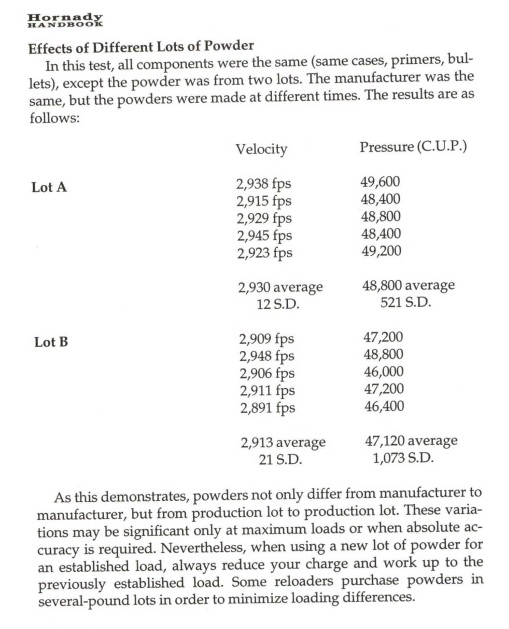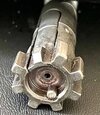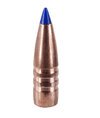I have done hours of reading on forums about this and can not find anyone who directly addresses it.
This is concerning H4350 (AR2209) and Varget (AR2208) powder and 30-06 cartridge. These are identical powders as confirmed by ADI.
Barnes 130 TTSX is listed in Barnes 53.5g 3050fps - 56.5g 3225fps
ADI lists 130 Speer - 49g 2979fps - 53.5g 3154fps (48,400CUP)
How can TTSX produce less pressure than a jacketed bullet? Also the velocity sort of correlates with ADI list as correct given Barnes has far exceeded the velocity - does anyone have signs of pressure using Barnes data. Or is barnes data hot as hell?
Second would be the amount of people using the Nosler BT load for Barnes 150g TTSX in 30-06,
Nosler BT - 3006 - ADI Data - AR2209 (H4350) MAX
Nosler ETIP - 3006 - ADI Data - AR2209 (H4350) MAX
What gets me is the pressure measurement is so different it makes it hard to compare but ADI has always said use a comparable bullet with mono and mono together - in this case, barnes would fit the NOsler etip better than the nosler bt. Most people are using the Nosler BT data - but that being said, if thats applied to the Nosler E-tip it would be on edge if not well into a dangerous load. 57.8 was also compressed!
So - is there a data discrepancy? Or has anyone used these loads and experienced pressure signs? which loads did you use? (SPECIFICALLY H4350/AR2209 with 150TSX or Varget (AR2208) with 130TTSX)? Respectfully, I do not want to hear about other weights, bullets, powders or cartridges.
Your experience will be helpful. Really wish Barnes published their pressure readings. Few manuals do this and its very strange.
Also if anyone could post H4350 data for 130g and 30-06 just curious of powder/pressure using such a slow powder for a 130g.
This is concerning H4350 (AR2209) and Varget (AR2208) powder and 30-06 cartridge. These are identical powders as confirmed by ADI.
Barnes 130 TTSX is listed in Barnes 53.5g 3050fps - 56.5g 3225fps
ADI lists 130 Speer - 49g 2979fps - 53.5g 3154fps (48,400CUP)
How can TTSX produce less pressure than a jacketed bullet? Also the velocity sort of correlates with ADI list as correct given Barnes has far exceeded the velocity - does anyone have signs of pressure using Barnes data. Or is barnes data hot as hell?
Second would be the amount of people using the Nosler BT load for Barnes 150g TTSX in 30-06,
Nosler BT - 3006 - ADI Data - AR2209 (H4350) MAX
62.0 grain (C) | 3068 fps | 48400 cup |
Nosler ETIP - 3006 - ADI Data - AR2209 (H4350) MAX
| Maximum | 57.8 grain (C) | 2927 fps | 57700 psi |
What gets me is the pressure measurement is so different it makes it hard to compare but ADI has always said use a comparable bullet with mono and mono together - in this case, barnes would fit the NOsler etip better than the nosler bt. Most people are using the Nosler BT data - but that being said, if thats applied to the Nosler E-tip it would be on edge if not well into a dangerous load. 57.8 was also compressed!
So - is there a data discrepancy? Or has anyone used these loads and experienced pressure signs? which loads did you use? (SPECIFICALLY H4350/AR2209 with 150TSX or Varget (AR2208) with 130TTSX)? Respectfully, I do not want to hear about other weights, bullets, powders or cartridges.
Your experience will be helpful. Really wish Barnes published their pressure readings. Few manuals do this and its very strange.
Also if anyone could post H4350 data for 130g and 30-06 just curious of powder/pressure using such a slow powder for a 130g.
Last edited:




